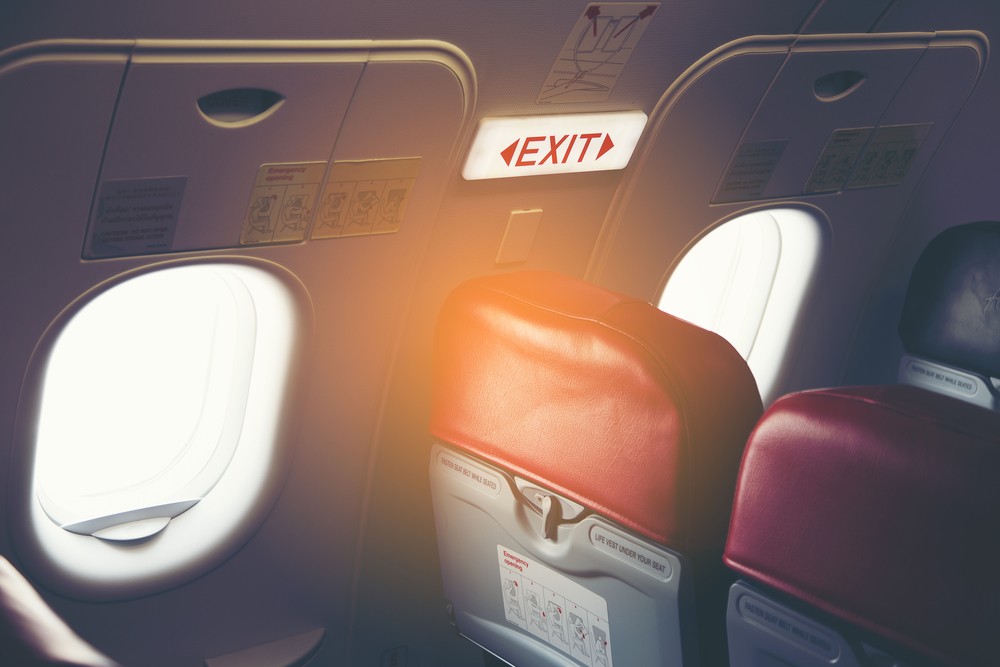Popular Reads
Top Results
Can't find what you're looking for?
View all search resultsPopular Reads
Top Results
Can't find what you're looking for?
View all search resultsPassenger safety: When to use a plane's emergency exits
The recent Lion Air "bomb joke" incident that resulted in passengers suffering injuries after exiting an emergency window prompts the question: When should emergency exits be used?
Change text size
Gift Premium Articles
to Anyone
O
n Monday, a passenger of private carrier Lion Air made a "joke" about a bomb while the plane was still on the apron at Pontianak's Supadio International Airport, prompting several passengers to panic and jump out of the emergency exit window and suffer head injuries and broken bones after falling from the wing.
Read also: Passenger's bomb joke pushes others to jump out of Lion Air plane
While the in-flight crew had instructed passengers to remain calm and exit the plane in an orderly fashion, the incident – the second such case within a week – raises a practical question: How and when should a plane's emergency door or window be opened?
Aviation observer Alvin Lie told kompas.com that no formal procedures were in place on when an emergency exit should be opened; whether before take-off or while the plane is in a particular position.
"The emergency door is used for emergency situations, which can come in many forms, such as when the plane is in an accident, has caught fire and other [situations]," Alvin said on Wednesday.
An emergency was a situation in which a passenger or a member of the cabin crew deemed that everyone on board needed to immediately exit the plane because of threats to their safety or their lives. Alvin said the ideal condition for opening an emergency exit was when the cabin crew had given the signal to evacuate. However, not all emergencies presented ideal conditions.
Alvin said ideal conditions were rare in an emergency situation, for example if an onboard information system suddenly malfunctioned or a cabin crew fell unconscious.
"So anyone has a responsibility and obligation to open the emergency [exit] if the time is right, which is during an emergency," he added.
Alvin said that opening the emergency door could be justified in the Lion Air case, since there was an apparent threat.
"It's very situational. If we think there is no threat to our safety or lives, of course we should not open the [emergency] door or window. However, in the Lion [Air] incident, there was a definite threat to their safety," said Alvin.
In the Lion Air case, the aircraft was still parked, so the cabin crew had not yet armed the evacuation slides to deploy automatically as they usually do once the plane pulls away from the gate. As a result, the passengers exiting onto the wing had no way to reach the ground safely.
As for opening emergency exits mid-flight, Alvin said it would be almost impossible to use the facilities once the plane was in the air because of technical reasons.
"As for the emergency doors, technically it would be almost impossible to open it when the plane is in the air, as well as emergency windows," he said. "If the window was tampered with by force and it cracked, the [cabin] would decompress."
The difference between the low atmospheric pressure outside the aircraft and the high, pressurized air inside the plane would suck out anything near the opening.
Alvin stressed that the plane must first land on the ground or on water before attempting to open the emergency exits. (kes)







